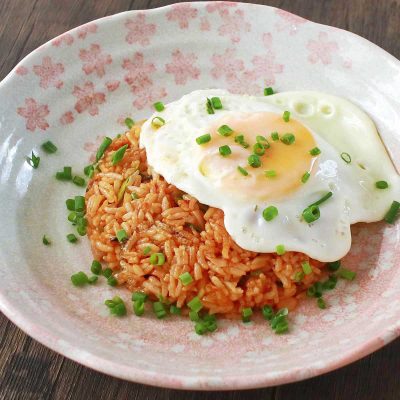When one hears or reads “fried rice”, the image conjured is a stir fried dish with neither broth nor sauce. That’s what most of us are familiar with.
Earliest documentation that goes back to the Sui Dynasty (581 to 618) shows that the brothless and sauce-free fried rice is the oldest form of Chinese fried rice. It has long been acknowledged by food historians that fried rice was born to avoid being wasteful. Leftover rice were combined with chopped meats and vegetables (which may also be leftovers), seasoned and heated to create a new dish.
Over time, however, regional variations developed. Naturally. China is vast, the agricultural produce varies and, as you can image, so do the leftovers. So what goes into the wok with the leftover rice differs from region to region. Let’s look at a few of them.

- Yangzhou fried rice is the kind most of us order at Chinese restaurants.
- Hokkien fried rice is egg fried rice served covered with saucy stir fry (this was “invented” by Hokkien settlers in Taiwan).
- Yin-yang fried rice is topped with two sauces of contrasting colors.
- Sichuan (Szechuan) fried rice is spicy because of the presence of doubanjiang (the broad bean chili paste used for cooking ma po tofu).
To be more accurate, Chinese cuisines (yes, plural) spread to the rest of Asia. Fried rice is just one of the dishes that the Chinese brought with them. As to when the spread began, no one really knows. But population movement appears to have begun during the Zhou Dynasty in the 11th Century BCE. From the highlands to the lowlands and, eventually, beyond Chinese borders.
Just to avoid confusion, we’re talking of the spread of Chinese cuisines, including fried rice, which should not be mixed up with how rice and rice farming spread to Asia. Available evidence, archeological and linguistic, says rice was first domesticated in the Yangtze river valley. The current consensus is that the Neolithic Dapenkeng people brought rice to Taiwan (which, at the time, was connected by land to mainland China) and, from there, rice found its way southward and eastward to the rest of Asia.
In other words, when we say that Chinese settlers introduced various cuisines throughout Asia, rice was already being planted and harvested in these regions. So, it couldn’t have been difficult to make the locals adapt the way the Chinese salvaged day-old rice and other leftovers. It was practical and it was genius, after all.

As to when these settlements took place, suffice to say that by the 16th century, there were Chinese settlers in present-day Cambodia, Indonesia, Borneo, Thailand and the Philippines. They were mostly private traders who decided not to heed the emperor’s order to return to China. The Chinese arrived much earlier in Japan and Korea.
It would be fun to cook and document the various fried rice dishes served around Asia. I have a few in the archive but I really should add to them.










